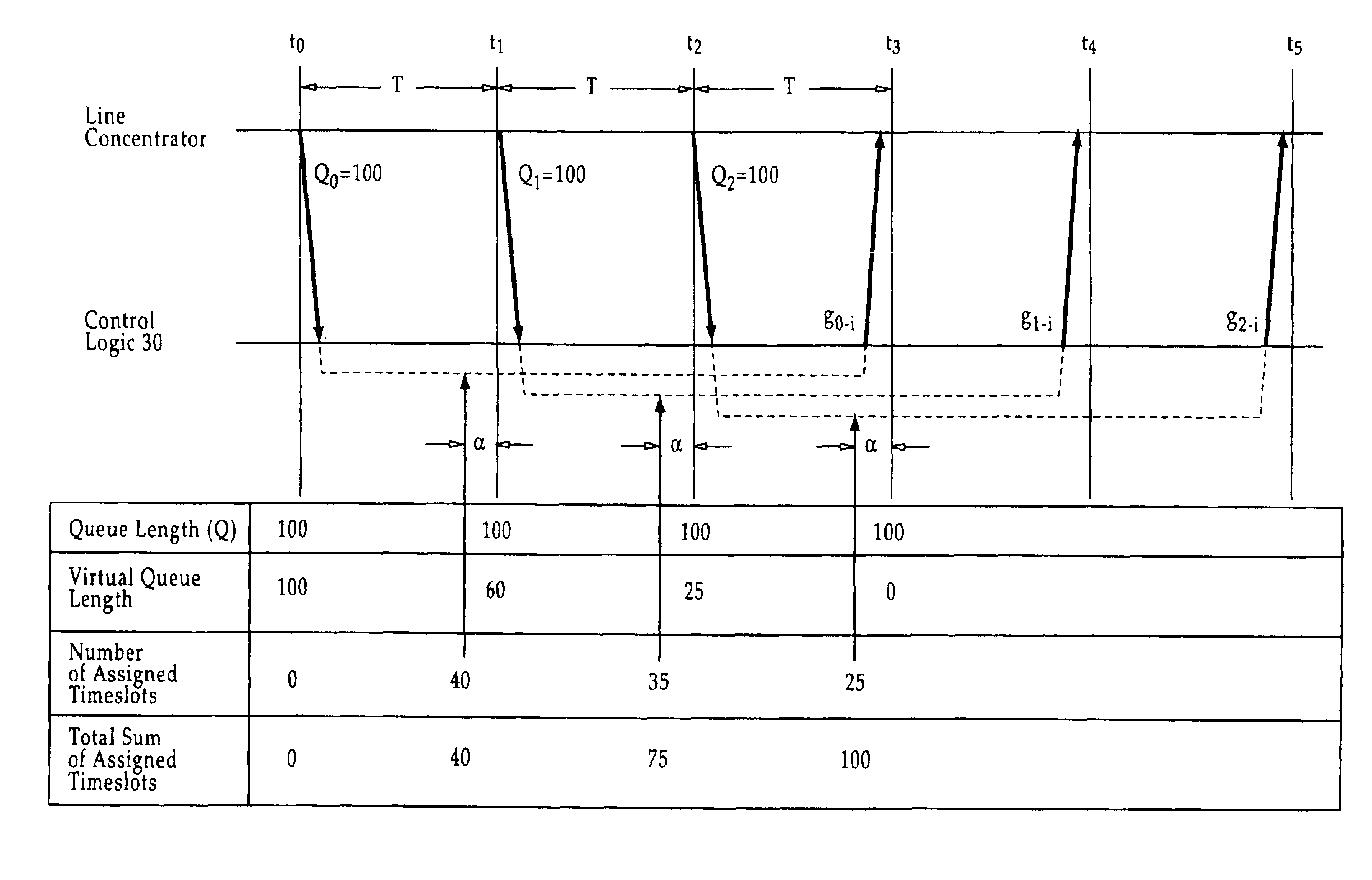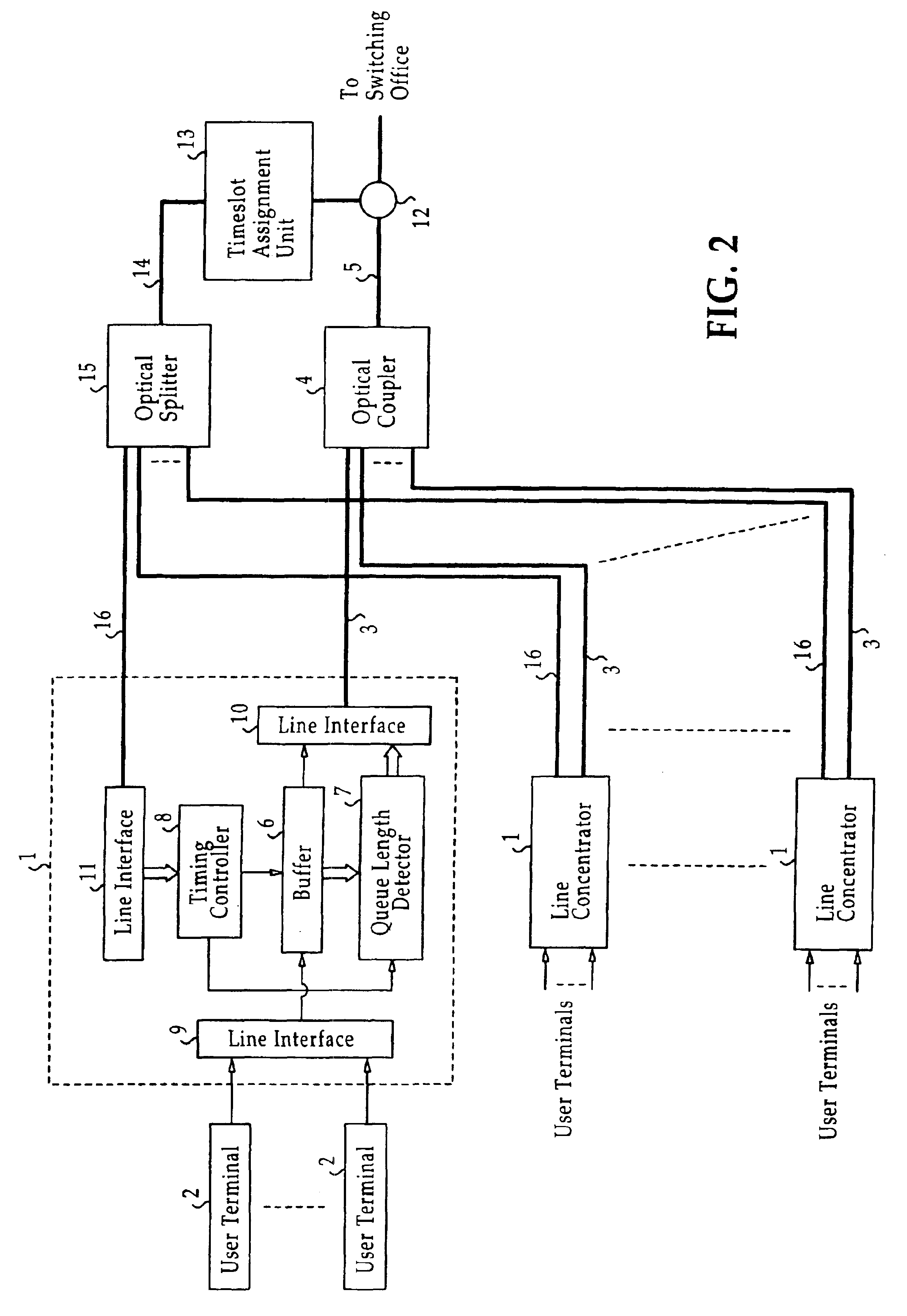Delay-compensated timeslot assignment method and system for point-to-multipoint communication networks
- Summary
- Abstract
- Description
- Claims
- Application Information
AI Technical Summary
Problems solved by technology
Method used
Image
Examples
Embodiment Construction
[0027]Referring now to FIG. 2, there is shown an ATM-PON (asynchronous transfer mode-passive optical network) system, or a point-to-multipoint communication system according to a first embodiment of the present invention. On the user side of the system, end-user systems, or line concentrators 1 of identical configuration are located at or near user terminals 2 to multiplex (i.e., concentrate) their traffic to each of a plurality of optical local access lines 3, which are connected by an optical coupler 4 to a common optical transmission medium 5. Each line concentrator includes a buffer 6 for temporarily storing ATM cells received via a line interface 9 from the associated user terminals 2. A queue length detector 7 is connected to the buffer 6 to determine the number of cells that form a queue in the buffer waiting for transmission and communicates the queue length to the network. A timing controller 8 is provided in each line concentrator for controlling the buffer 6 to forward a ...
PUM
 Login to View More
Login to View More Abstract
Description
Claims
Application Information
 Login to View More
Login to View More - R&D
- Intellectual Property
- Life Sciences
- Materials
- Tech Scout
- Unparalleled Data Quality
- Higher Quality Content
- 60% Fewer Hallucinations
Browse by: Latest US Patents, China's latest patents, Technical Efficacy Thesaurus, Application Domain, Technology Topic, Popular Technical Reports.
© 2025 PatSnap. All rights reserved.Legal|Privacy policy|Modern Slavery Act Transparency Statement|Sitemap|About US| Contact US: help@patsnap.com



